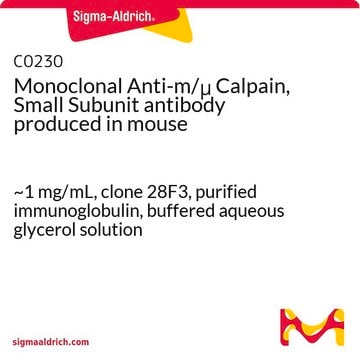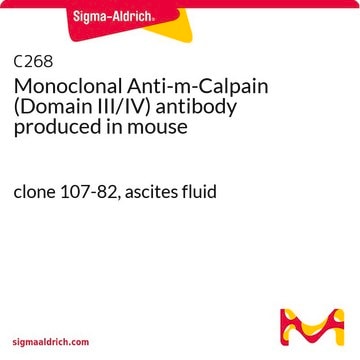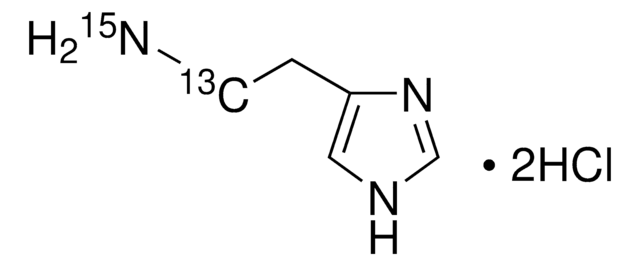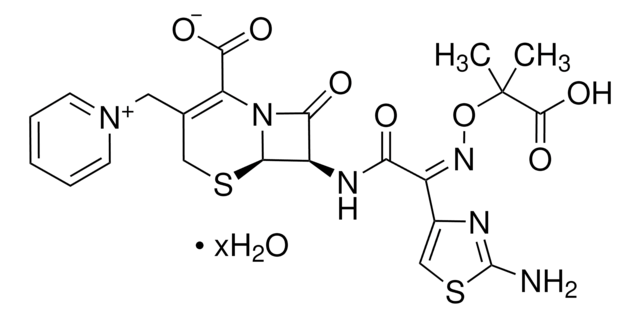Wichtige Dokumente
C5736
Monoclonal Anti-μ-Calpain (Calpain I, subunit p80) antibody produced in mouse
clone 15C10, purified immunoglobulin, buffered aqueous glycerol solution
Synonym(e):
Anti-CANP, Anti-CANP1, Anti-CANPL1, Anti-SPG76, Anti-muCANP, Anti-muCL
About This Item
Empfohlene Produkte
Biologische Quelle
mouse
Qualitätsniveau
Konjugat
unconjugated
Antikörperform
purified immunoglobulin
Antikörper-Produkttyp
primary antibodies
Klon
15C10, monoclonal
Form
buffered aqueous glycerol solution
Speziesreaktivität
bovine, mouse, rat, human
Methode(n)
immunoprecipitation (IP): 2-5 μL (native and denaturing conditions)
indirect ELISA: suitable
western blot (chemiluminescent): 1:1,000
Isotyp
IgG1
UniProt-Hinterlegungsnummer
Versandbedingung
wet ice
Lagertemp.
−20°C
Angaben zum Gen
human ... CAPN1(823) , CAPNS1(826)
mouse ... Capn1(12333) , Capns1(12336)
rat ... Capn1(29153) , Capns1(29156)
Allgemeine Beschreibung
Spezifität
Immunogen
Anwendung
Biochem./physiol. Wirkung
Physikalische Form
Haftungsausschluss
Sie haben nicht das passende Produkt gefunden?
Probieren Sie unser Produkt-Auswahlhilfe. aus.
Lagerklassenschlüssel
10 - Combustible liquids
WGK
WGK 1
Flammpunkt (°F)
Not applicable
Flammpunkt (°C)
Not applicable
Persönliche Schutzausrüstung
Eyeshields, Gloves, multi-purpose combination respirator cartridge (US)
Hier finden Sie alle aktuellen Versionen:
Besitzen Sie dieses Produkt bereits?
In der Dokumentenbibliothek finden Sie die Dokumentation zu den Produkten, die Sie kürzlich erworben haben.
Active Filters
Unser Team von Wissenschaftlern verfügt über Erfahrung in allen Forschungsbereichen einschließlich Life Science, Materialwissenschaften, chemischer Synthese, Chromatographie, Analytik und vielen mehr..
Setzen Sie sich mit dem technischen Dienst in Verbindung.







